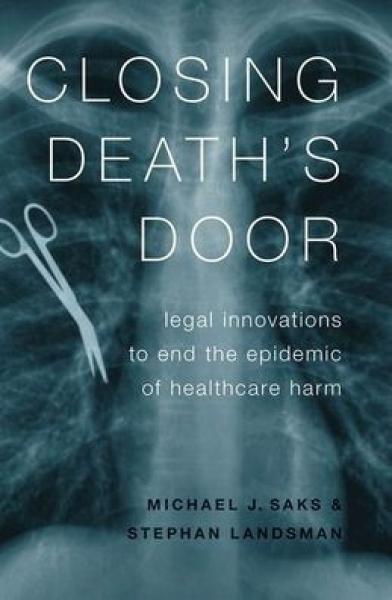Description
Closing Death's Door brings the psychology of decision making together with the law to explore ways to improve patient safety and reduce iatrogenic injury, when neither the healthcare industry itself nor the legal system has made a substantial dent in the problem. Beginning with an unflinching introduction to the problem of patient safety, the authors go on to define iatrogenic injury and its scope, shedding light on the culture and structure of a healthcare industry that has failed to effectively address the problem-and indeed that has influenced legislation to weaken existing legal protections and impede the adoption of potentially promising reforms. Examining the weak points in existing systems with an eye to using law to more effectively bring about improvement, the authors conclude by offering a set of ideas intended to start a conversation that will lead to new legal policies that lower the risk of harm to patients. Closing Death's Door is brought to vivid life by the stories of individuals and groups that have played leading roles in the nation's struggle with iatrogenic injury, and is essential reading for medical and legal professionals, as well as lawmakers and laypeople with an interest in healthcare policy.
"Closing Death's Door explores innovative legal strategies to address the challenge of medical error. In the United States today, several hundred thousand patients die in hospitals each year because of errors in medical treatment-the nation's third leading cause of death. The legal mechanism designed to deal with this epidemic of injury and death is the medical malpractice system. It has failed to stem the tide of iatrogenic harm. Among the reasons are the costliness of the malpractice system, its availability to only a minuscule percentage of those harmed, and decades of "tort reform" efforts that have effectively extinguished the system for all but the most egregious claims. In 1999, in To Err Is Human, the Institute of Medicine (now the National Academy of Medicine) sounded an alarm about the toll taken by medical error. Its proposed solution-a set of reporting systems to document problems and generate data on which solutions might be based-has been a failure. The time has come for a fresh look at what the law might do to contribute to patient safety. To begin a conversation about legal innovations designed to spur healthcare system improvements directed at reducing harmful medical errors, this book explores a number of possible steps, including: Well-designed economic incentives to stimulate greater investment in safety. Promotion of systems approaches to safer delivery of care. Government regulation and surveillance in especially risky treatment contexts. Encouragement of a range of technological improvements, especially involving information technology"--
Saks and Landsman have written the definitive synthesis of the empirical and theoretical literatures on medical malpractice liability and patient safety, and have done so in delightful prose and using examples that will all readers will find engaging. Time for the rest of us who toil in these fields to move on to other things.-Charles Silver, Roy W. and Eugenia C. McDonald Endowed Chair in Civil Procedure, School of Law, University of Texas at Austin
This book is a must read for anyone seriously interested in patient safety. They put to rest the false claim that medical malpractice reform holds out any promise for patient safety, and they explain how to lay the groundwork for reforms that would reduce the harm to patients. Tom Baker, William Maul Measey Professor of Law and Health Sciences, University of Pennsylvania and author of The Medical Malpractice Myth.
Product Details
- Oxford University Press, Brand
- Feb 4, 2021 Pub Date:
- 0190667982 ISBN-10:
- 9780190667986 ISBN-13:
- 352 Pages
- 9.3 in * 6.2 in * 1.4 in Dimensions:
- 1 lb Weight:




